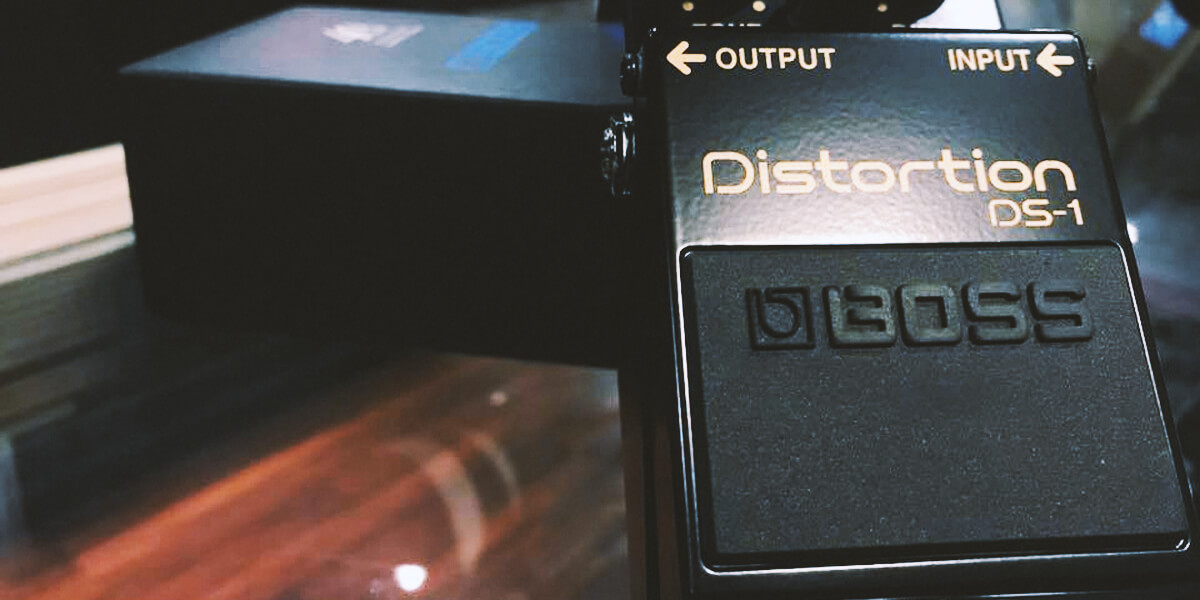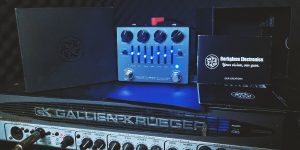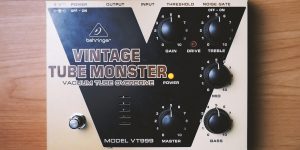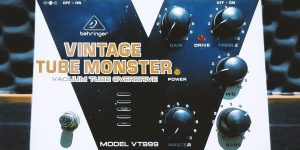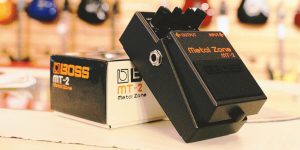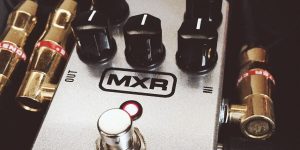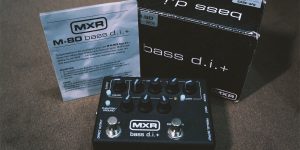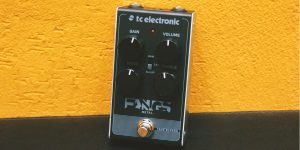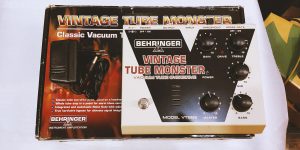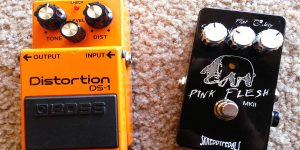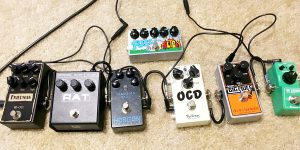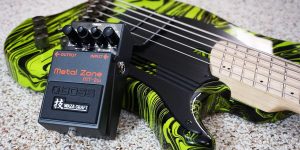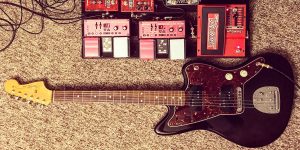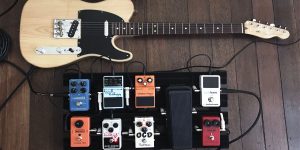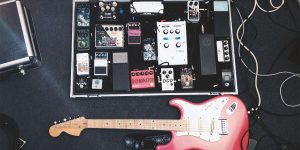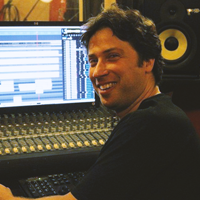Distortion is an element of heavy genres, including rock, but for the classic style, you usually use overdrive. So what to do if you decide to play something lighter and you don’t have the proper pedal? I will tell you about the best distortion pedals for rock. Tuning them for a light and clean overdrive, you can get the good sound necessary for classic rock.
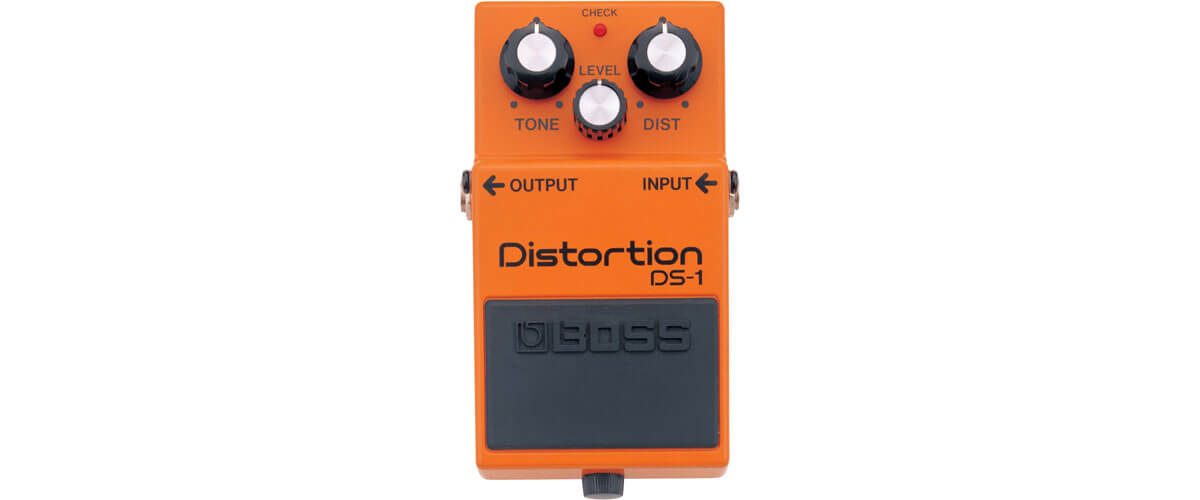
Distortion pedal for rock comparison table
| Name | Controls | Connectors | Power Supply | Review |
|---|---|---|---|---|
| Boss DS-1 best overall | pedal switch, tone, level, dist | input jack: 1/4-inch, output jack: 1/4-inch, DC IN jack | Alkaline battery (9V, 6LR61) or Carbon-zinc battery (9V, 6F22), AC adaptor | Review |
| JOYO JF-03 budget | pedal switch, tone, level, dist, EQ mid freq, EQ high freq, EQ low freq | input jack: 1/4-inch, output jack: 1/4-inch, DC IN jack | Carbon-zinc battery (9V, 6F22), DC adaptor (9V) | Review |
| Electro-Harmonix Little Big Muff | pedal switch, tone, level, sustain | input jack: 1/4-inch, output jack: 1/4-inch, DC IN jack | Carbon-zinc battery (9V, 6F22), DC adaptor (9V) | Review |
Best distortion pedals for rock reviews
Boss DS-1 – best overall
In this Boss DS-1 review, I will tell you about one of today's most popular and selling distortion pedals. It was introduced back in 1978 and was produced in Japan and later in Taiwan. And in the 2000s, Boss became part of Roland. However, these events did not affect the quality of the product, and numerous modifications only improved the basic model.
The bright orange pedal has incredible durability, so you can often find many used models on the market. And I assure you, they are still as great as they were years ago. Another attractive aspect of the Boss DS-1 is its price, which is surprisingly low for such a celebrity. So let's take a closer look at it.
Build and design

The design of the pedal has not changed since its creation and is recognizable all over the world. The case is incredibly sturdy, and it can last you for a very long time. You don't have to worry about its integrity; use it with pleasure!
The Boss DS-1 is pleasant to look at and easy to operate. In addition to the standard input and output jacks you can use to connect it to your circuit, it also has three control knobs and a foot pedal. There is a CHECK indicator to indicate the control battery. So nothing can throw you off. The distortion pedal is portable and will fit in your pocket - that's how compact it is. With a weight of 13 oz, it measures only 2-7/8 inches, 5-1/8 inches, and 2-3/8 inches. So this is an option where you can use it wherever you want.
Features
Let's get down to the features of the Boss distortion DS-1. As I have already written, it is very simple and comfortable. For example, the on/off pedal is very smooth and doesn't snag or break. And the 1/4" DC input and output connectors are telephone-type with a 20 dBu rating. The pedal is powered by an alkaline battery (9V, 6LR61) or a zinc-carbon battery (9V, 6F22), but you'll need to buy an AC adapter.
There are only three controls: TONE, DIST, and LEVEL. The latter essentially controls the volume, allowing you to use the Boss DS-1 at a concert with maximum sound or home by setting it to the minimum. TONE - The frequency control, their equalizer, is a standard control for most pedals, as it is for an amp or electric guitar. In the left position, you get more bass; in the right position, you get more treble. With DIST, I hope everything is clear. With this control, you turn the clean sound of your guitar into a distorted and crunchy sound. Perfect for performing heavy genres.
Sound
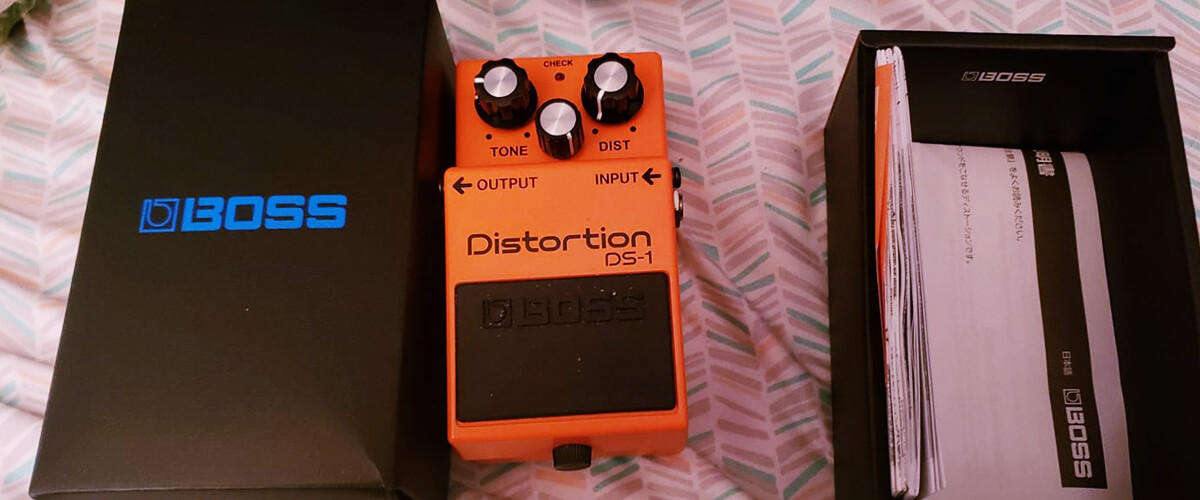
To conclude all the above, it is only necessary to tell how the Boss distortion pedal sounds. I have a tube amplifier, and there were no problems. But I have encountered comments about it not being very good with solid-state ones. So, just keep that in mind, and check beforehand.
Otherwise, in my opinion, this pedal is perfect for your circuit. And, of course, it's suitable for metal and rock, delivering a fun, high-quality overdrive. Excellent wide-range tone, low gain, warmth, and harshness - a combination worthy of old-school masterpieces. For solos, you can press it on an already distorted sound to achieve more volume and balance the sound.
Still need proof? Steve Vai, Joe Satriani, Daf Aldrich, Mike Stern, and other legends have used the Boss DS-1. So I think it's worth you, too.
Key specs
- Controls: pedal switch, tone, level, dist.
- Connectors: input jack: 1/4-inch, output jack: 1/4-inch, DC IN jack.
- Power Supply: Alkaline battery (9V, 6LR61) or Carbon-zinc battery (9V, 6F22), AC adaptor.
- Size (WxDxH), inch/cm: 2.8x5x2.3/7.3x12.9x5.9.
- Weight oz/g: 13/360.
Producing a high-quality overdrive, the Boss DS-1 is definitely the best distortion pedal for classic rock. Excellent wide-range tone, low gain, warmth, and harshness – a combination worthy of old-school masterpieces. A great choice for true connoisseurs and beginners looking to move up to a higher level.
JOYO JF-03 – budget
Looking for classic rock distortion? My JOYO JF-03 review will introduce you to a bright representative of this class. This pedal is modeled after the MI Audio Crunchbox, so the British rock of the 60s and 70s is just what it can perfectly do. To understand its benefits and features, I will describe it in more detail. But let's not waste time and get to the most interesting part.
Build and design
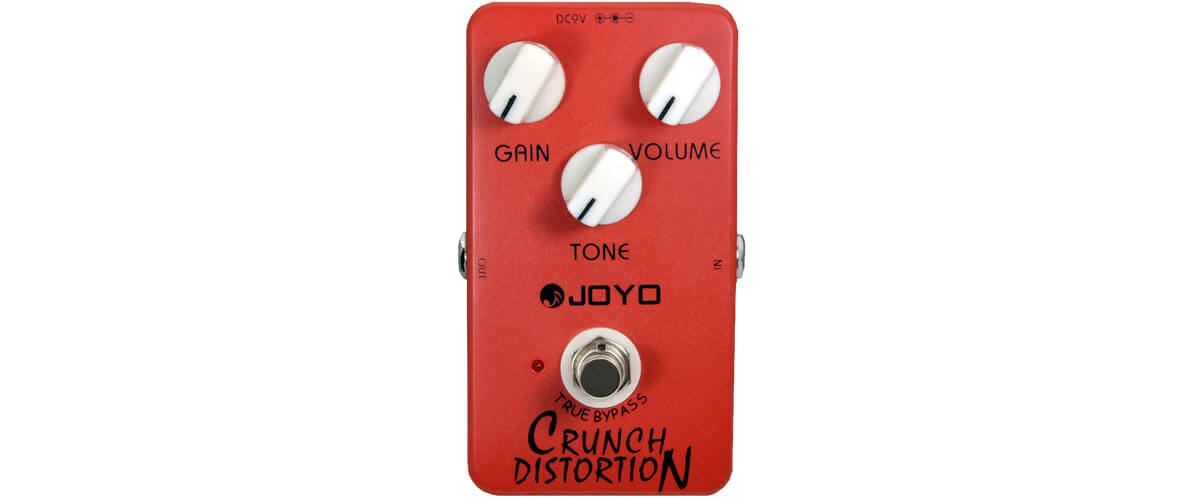
The JF-03 is very compact and lightweight because it's made of aluminum. But it is very durable and can last you for years, so feel free to stomp on it. The pedal measures 4.6 inches, 2.8 inches, and 2.2 inches and weighs 11.6 ounces, so you can literally carry it in your pocket, which is great for constant touring. Its rich red color and On/Off indicator won't leave it invisible, and you're sure to find it in the dark. Also, the white knobs of the Gain, Level, and Tone knobs that stand out in the red can help. The switch pedal is metal and shaped like a round button, as well as the standard IN and OUT jacks on the sides. Nothing extra, understated, stylish, yet bright. I love it.
Features
Well, the JOYO JF-03 features let you have a hard, responsive distortion reminiscent of British amps with high gain. It's classic rock, even if you set the Gain to the middle. You get everything you expected from this style - harmonics, punch, and cascading gain. You'll discover new facets of its sound when you connect the JOYO JF-03 to a circuit. For example, if you turn down your guitar's volume, you might hear something unsightly. That's why you can use an extra pedal in the chain in front of the JF-03 to boost the treble.
Sound
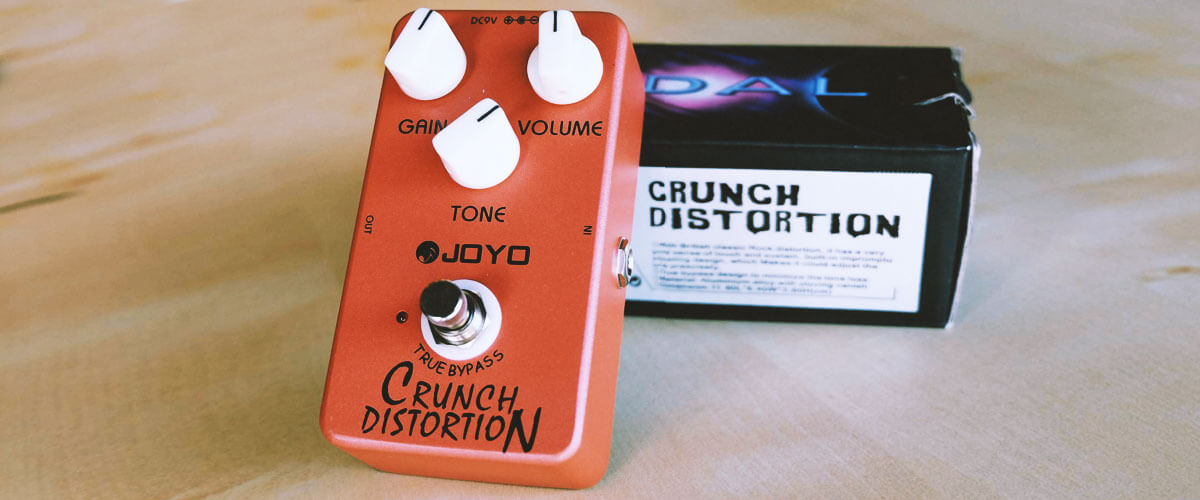
As for the sound, you'll have to experiment. Set the gain to zero and increase the volume for cleaner gain, or, to get that famous Marshall overdriven sound, turn the volume down and increase the gain, creating true rock and roll tones. Lower gain settings create great AC/DC-style tones. Setting the gain to medium gets you into Guns N 'Roses territory, and maximizing the gain gets you to classic Ozzy Osbourne, Iron Maiden, and Metallica gain levels.
If you like old-school rock, this pedal is for you. Considering its price on the market, you will definitely not miss out! Anyway, every musician should choose their own equipment according to their taste. And for that, you must do a lot of work: try new things, experiment, and never stop.
Key specs
- Controls: pedal switch, tone, level, dist, EQ mid freq, EQ high freq, EQ low freq.
- Connectors: input jack: 1/4-inch, output jack: 1/4-inch, DC IN jack.
- Power Supply: Carbon-zinc battery (9V, 6F22), DC adaptor (9V).
- Size (WxDxH), inch/cm: 2.8x4.7x2.1/7.2x12x5.5.
- Weight oz/g: 10/290.
Budget and a very good starting pedal for classic rock JOYO JF-03 is modeled after MI Audio Crunchbox, so British rock of the 80s is what you get, even if you set the gain to the middle. You get everything you expect from this pedal – harmonics, punch, cascading gain. Believe me, you will be pleasantly surprised when you work with the JF-03 and discover all its facets.
Electro-Harmonix Little Big Muff
For those who understand the variety of electric guitar gear Electro-Harmonix Little Big Muff review won't be new because this model is a smaller version of the famous EHX Big Muff Pi, which has been on the market since the 70s. For those who don't know, it's a fuzz-style distortion pedal with a wonderful effect. It's still the same stuff in a smaller package. But unlike previous versions, it has eliminated the lack of cabinet strength. And now it's coveted by many because it's compact for transportation and convenient to add to your pedalboard.
Build and design
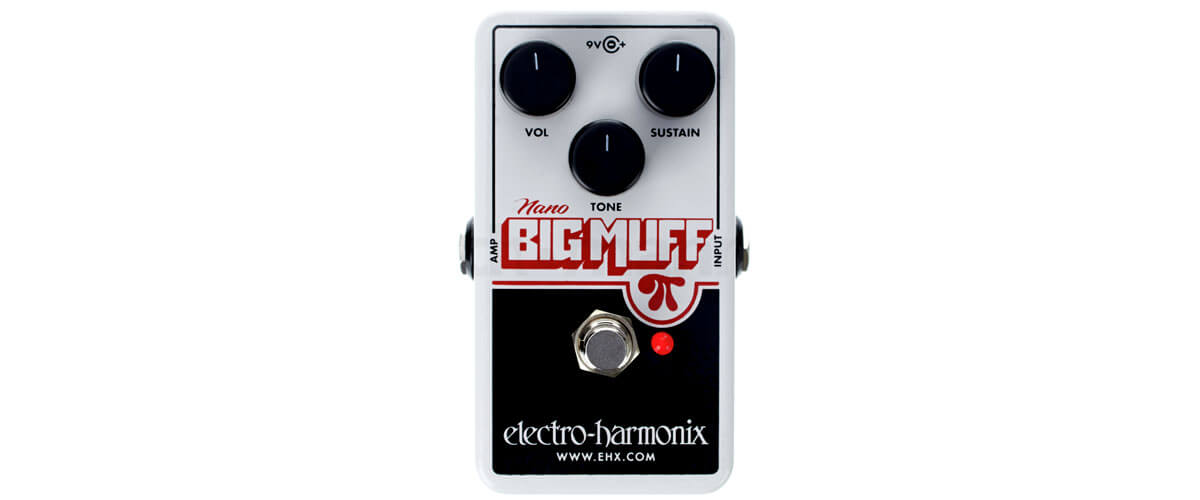
So, the Little Big Muff is compact and reliable. It measures only 10.2 inches, 8.9 inches, and 12.1 inches and weighs 12.3 oz. The original model was bulky, and all subsequent modifications lacked the necessary strength, broke quickly, and had to be replaced. As a result, the manufacturer has taken into account all customers' wishes, and today we can use a solid device (cast body even to the touch inspires confidence) with excellent control knobs.
There are three Control Knobs, a Bypass Footswitch, an On/Off indicator, and Input and Output jacks on the sides of the body. The only thing that may make it difficult to use the EHX Little Big Muff is the lack of a battery hatch. To replace it, you will have to unscrew the back panel. Fortunately, you don't have to do this very often.
Features
Next, I will describe the Electro-Harmonix Little Big Muff features. Let me start by saying that the 9V battery is included in the package. The pedal can also run on an adapter, but you need to buy it separately. Also, the connectors in the early models required a mini jack adapter, but now they are standard 6.3 mm, like BOSS. But all these would not be so important if not for its main function - the fuzz effect.
The pedal has only three controls: Volume, Tone, and Sustain. So, basically, you have one sound that can change the timbre and sustain. It's easy - just tune it to your taste and play. When you're done playing, turn it off. I'll tell you about the effect that the Little Big Muff produces in the "Sound" section. Plus, the Little Big Muff has a True Bypass feature, which makes it even more pedalboard-friendly by directing the signal from the guitar input to the output when it's turned off.
Sound
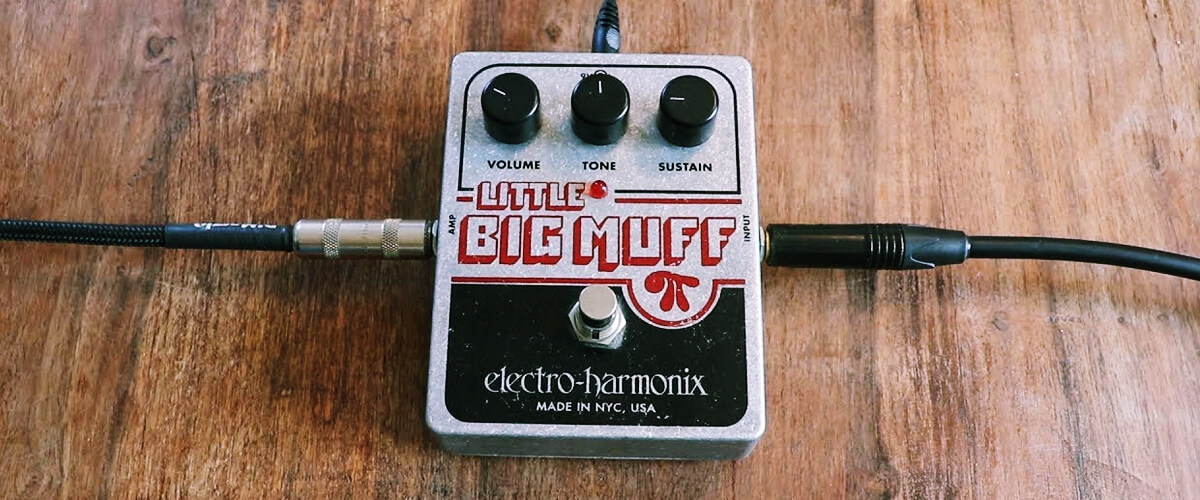
So, as a result of using this model, you get only one distortion - an incredible hissing sound and limitless sustain. Electro-Harmonix's Little Big Muff sound is recognizable, and if you want to understand what it is - listen to Pink Floyd (for example, Comfortably Numb), Nirvana (Lithium), or Mudhoney. At the same time, you'll realize how different fuzz distortion can be from this pedal. And all for a great price! You'll have to experiment with the Tone control because it's so sensitive that any slight left or right turn will give you the widest range. Pick what you like and play, play and play.
Key specs
- Controls: pedal switch, tone, level, sustain.
- Connectors: input jack: 1/4-inch, output jack: 1/4-inch, DC IN jack.
- Power Supply: battery (9V), DC adaptor (9.6V).
- Size (WxDxH), inch/cm: 10.2x8.9x12.1/26x22.6x30.7.
- Weight oz/g: 12.3/348.
The Electro-Harmonix Little Big Muff distortion pedal for rock music is a smaller version of the famous EHX Big Muff Pi style fuzz that has been familiar to musicians since the 1970s. All you get is an incredible sizzling sound and limitless sustain. If you want to understand how it works, listen to Pink Floyd (Comfortably Numb, for example) or Nirvana (Lithium). And if that’s what you’re looking for, then feel free to buy this “baby.”
FAQ
Pedals every guitarist should own
What is considered classic rock?
What is the most important element in rock music?
It appeared in the 1960s during the popularity of such genres as Rock and Roll, but with a strong Blues influence, and it is wholly associated with the instruments on which it is played – electric guitar, electric bass, electric organ, or electric piano, which provide Rock sound distortion.
The melody also defines any style of music, but I guess if you still have to single out just one parameter, I would focus on rhythm. It determines the shape and movement of any composition.
Who started classic rock?
It is hard to argue with that, but still, the Beatles in the early 1960s are deservedly considered the first performers of Classic Rock, after which came the Rolling Stones, undoubtedly the brightest first representatives of the genre at its dawn. They sound Classic in the generally accepted sense.

